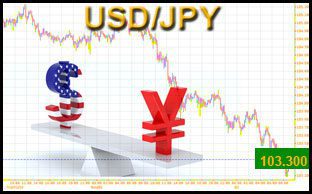
The U.S. dollar continued to be defensive in New York morning deals on Wednesday, after data showed that U.S. private sector hiring grew slower than expected in October and growing chances of Republican candidate Donald Trump winning the U.S. Presidential elections spooked investors.
Data from the payroll processor ADP showed that U.S. private sector employment increased less than expected in the month of October.
ADP said private sector employment climbed by 147,000 jobs in October following an upwardly revised jump of 202,000 jobs in September.
Economists had expected private sector employment to rise by about 170,000 jobs compared to the increase of 154,000 jobs originally reported for the previous month.
With just six days before the presidential election, a poll showed Trump ahead of Hillary Clinton by one percent following the announcement of FBI investigation over the Clinton e-mail scandal.
The survey from ABC News/Washington Post put Trump with a 46 percent lead over Clinton's 45 percent, indicating a tightening race between candidates.
The two-day Federal Open Market Committee meeting ends later in the day. The central bank is likely to maintain status quo on rates but there might be signals of a December meeting hike.
The currency has been trading weaker in the day, as the possibility of a Trump comeback rattled markets favoring the status quo.
The greenback that ended Tuesday's trading at 1.1055 against the euro slipped to a new 3-week low of 1.1102. Further weakness may take the dollar to a support around the 1.12 mark.
The greenback stayed lower around 0.9709 against the Swiss franc, after setting more than a 4-week low of 0.9695 at 4:00 am ET. This marks a 0.6 percent fall from Tuesday's closing value of 0.9753.
Extending early decline, the greenback weakened to more than a 3-week low of 103.09 versus the Japanese yen. Continuation of the greenback's downtrend may see it challenging support around the 104.15 region.
The Bank of Japan will make policy adjustments as appropriate with a view to maintain the momentum toward achieving the price stability target, Governor Haruhiko Kuroda told lawmakers.
At the meeting held on November 1, the bank decided to maintain the guideline for market operations in which the short-term policy interest rate is set at minus 0.1 percent and the target level of 10-year JGB yields is set at around zero percent.
The greenback reversed from an early low of 1.2221 against the pound, dropping to more than a 3-week low of 1.2353. On the downside, 1.27 is likely seen as the next support level for the greenback.
Survey figures from the Nationwide Building Society showed that U.K. house price inflation slowed more-than-expected to its lowest level in nine months during October.
The house price index rose 4.6 percent year-on-year following 5.3 percent increase in September. Economists had forecast a score of 4.9 percent.
The greenback edged down to 1.3359 against the loonie and 0.7676 against the aussie, off its early highs of 1.3406 and 0.7613, respectively. The next possible support levels for the greenback are seen around 1.30 against the loonie and 0.79 against the aussie.
The greenback fell to 0.7302 against the kiwi, its lowest since October 4, and was 1.6 percent lower from Tuesday's closing quote of 0.7184. The greenback may possibly locate support around the 0.74 region.
Data from Statistics New Zealand showed that NZ's jobless rate came in at 4.9 percent in the third quarter of 2016. That beat forecasts for 5.1 percent, which would have been unchanged from the three months prior.
by RTT Staff Writer
For comments and feedback: editorial@rttnews.com
Forex News

